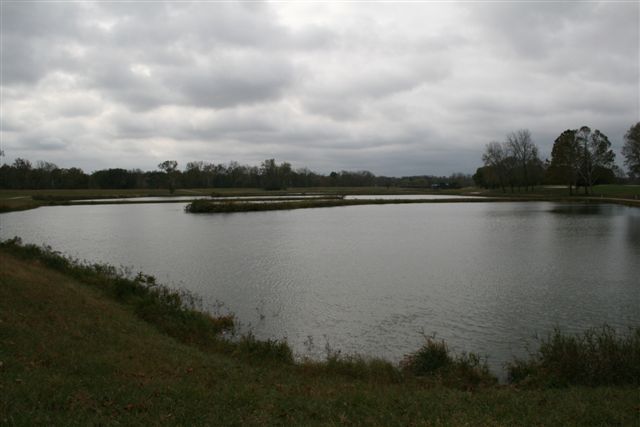A City goes ahead changing its wells
The customer, a Mid-West Water Utility, is in the fortunate situation to have access to lots of water, in fact, almost as much water as they want. Thinking ahead, the engineers and planners decided many years ago to implement a water banking system where, instead of letting the runoff from rain and rivers pass by, they would implement an active recharge program. Today, using ponds and natural recharge, they are recharging their aquifers with millions of gallons of water per day.
At the same time they pump the groundwater from these aquifers to their plant for delivery to the city residents.

Settling and filtration pond
We will now see why Boreline was chosen for this project.
The advantages of the Boreline are that it is NSF61 Approved, for use with Potable Water. It is also easy to install the Boreline from the back of their truck so as to avoid any contamination by coming into contact with the ground or contaminated areas.

Corroded column pipe
Some problems that occurred in the extraction wells are due to the high manganese and iron content found in the water. The result is internal scaling and corrosion, leading to reduced pumping efficiencies and higher maintenance costs.

Ready to install
The pump outlet was reduced from a 12” to the 8” Boreline fitting using a flanged end. The Boreline was then clamped on the SS316 fitting using the patented double-ring clamps. This fitting can support up to 46,000lbs which easily includes the weight of the pump, Boreline and water column.

Double-Ring SS316 Fitting
The pump outlet was reduced from a 12” to the 8” Boreline fitting using a flanged end. The Boreline was then clamped on the SS316 fitting using the patented double-ring clamps. This fitting can support up to 46,000lbs which easily includes the weight of the pump, Boreline and water column.

8” Boreline and 125HP pump
The Boreline has a rib that runs along its length to support the power cable. In this way, the entire pump, Boreline and power cable are removed and installed in the well without the need to connect and reconnect any cables.


Installing Boreline
As can be seen above, the Boreline is simply lowered into the well in one, continuous length. There are no joints or connections.
The elbow is lowered into position and before long, we are pumping!





